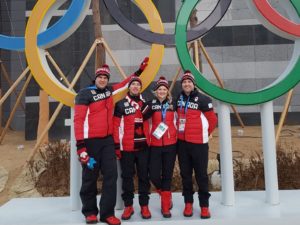Two new True Sport resources are designed to help sport organizations put values at the centre of coach and player selection processes. The Coach Selection Process resource provides practical tools to support the identification of coaches that are committed to values-based sport. The Player Selection Process resource supports a selection approach that is designed to engage athletes in a level of play that suits their abilities, desired level of commitment, and social needs. Download both resources on the True Sport website.
Interventions such as age-ordered shirt numbering and corrective adjustments that account for birthday in timed events such as sprinting, may be effective at mitigating relative age effects (RAEs). Learn more about current research and new innovations to address RAEs in the SIRCuit.
The “relative age effect” (RAE) advantages relatively older individuals in an age group while disadvantaging the relatively youngest. This age inequality can have significant impacts on sport and educational performance, and long-term health and wellbeing. Learn more in the SIRCuit.
On October 17, 2018, Relative Age Effects: An International Conference was hosted at York University where leading international scholars gathered to discuss the implications of athletes’ dates of birth on sport, health, and education. This article highlights the history of the phenomenon known as the “relative age effect” as well as its impact on sport, education, and health.
If you suggested that the date people were born would have a significant impact on their lives, you may be met with a skeptical glance. People may assume you are speaking about the infamous field of astrology. However, one possible key to “success” is not the alignment of celestial bodies, but instead, the effects resulting from one’s birth date relative to a pre-determined cut-off date. Within sport and educational contexts, individuals are often placed into age cohorts in an attempt to ensure fairness and equality. Unfortunately, this process can inadvertently lead to relative age effects (RAEs), which describe the (dis)advantages associated with being the relatively youngest or oldest within a particular age cohort (Barnsley et al., 1985).
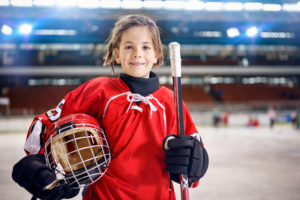 Let’s assume that Amelia and Tasha are competing against one another for the last spot on the roster of a competitive (i.e., travel) youth ice hockey team. Amelia was born in January of 2008 and Tasha was born in December of 2008. Both athletes are skilled hockey players, but because Amelia is 11-months older than Tasha (representing more than 10% additional life experience) and has had more time to develop, both cognitively and physically, she appears to her coaches to be the superior player and makes the cut. Consequently, Amelia gets additional practice time, better coaching, and the opportunity to hone her skills by competing against better teams. On the contrary, Tasha must resign herself to playing in the local house league. Since this was the third season in a row that she was the last player to be cut from the travel team, she is now contemplating quitting hockey altogether. While one’s date of birth may seem like a trivial demographic variable, the above example demonstrates that its consequences can be quite profound.
Let’s assume that Amelia and Tasha are competing against one another for the last spot on the roster of a competitive (i.e., travel) youth ice hockey team. Amelia was born in January of 2008 and Tasha was born in December of 2008. Both athletes are skilled hockey players, but because Amelia is 11-months older than Tasha (representing more than 10% additional life experience) and has had more time to develop, both cognitively and physically, she appears to her coaches to be the superior player and makes the cut. Consequently, Amelia gets additional practice time, better coaching, and the opportunity to hone her skills by competing against better teams. On the contrary, Tasha must resign herself to playing in the local house league. Since this was the third season in a row that she was the last player to be cut from the travel team, she is now contemplating quitting hockey altogether. While one’s date of birth may seem like a trivial demographic variable, the above example demonstrates that its consequences can be quite profound.
Background on the RAE
Interest in RAEs began in the early 1980s, when Roger and Paula Barnsley attended a Lethbridge Broncos (formerly of the Western Hockey League) ice hockey game. As Paula was reviewing the game program, she noticed that the majority of athletes were born in the months of January, February, and March, which corresponded with the first months of the selection year based on Hockey Canada’s January 1st cut-off date. Intrigued by what Paula had observed, Roger went home after the game and began examining the birthdates of professional hockey players and noted the same birthdate trend, which they later coined the RAE (Barnsley et al., 1985). Fast-forward 30 years and the RAE has garnered a great deal of attention in the popular press, having been featured in best-selling books such as Gladwell’s (2008) Outliers: The Story of Success and Levitt and Dubner’s (2009) SuperFreakonomics, sports magazines like Sports Illustrated (Levy, 2011) and The Hockey News (Shuker, 2018), and on television programs such as 60 Minutes (CBS Interactive, 2012). Since the Barnsleys’ initial discovery, researchers have examined the RAE from a variety of perspectives including sport, education, and health and wellbeing.
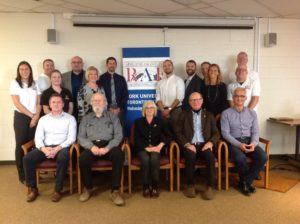 In an attempt to better understand and work towards resolving such age inequalities in sport, leading RAE researchers gathered on October 17, 2018 on the campus of York University in Toronto, ON to discuss the implications of RAEs on sport, education, and health and wellbeing. Specifically, Relative Age Effects: An International Conference brought together renowned scholars from around the globe to discuss RAEs from various perspectives in hopes of identifying solutions to minimize the age bias associated with using annual cut-off dates. You can learn more about each conference session in a Sport for Life blog by Paul Jurbala.
In an attempt to better understand and work towards resolving such age inequalities in sport, leading RAE researchers gathered on October 17, 2018 on the campus of York University in Toronto, ON to discuss the implications of RAEs on sport, education, and health and wellbeing. Specifically, Relative Age Effects: An International Conference brought together renowned scholars from around the globe to discuss RAEs from various perspectives in hopes of identifying solutions to minimize the age bias associated with using annual cut-off dates. You can learn more about each conference session in a Sport for Life blog by Paul Jurbala.
RAEs in Sport
The conference began with words from the Barnsleys and their colleague Gus Thompson, who presented their early findings within the context of Canadian ice hockey. These studies laid the groundwork for numerous researchers to explore the RAE phenomenon in a variety of sports (e.g., soccer, baseball) and competitive levels. Cobley and colleagues’ (2009a) meta-analysis illustrated that sport, particularly culturally-relevant sports such as soccer in Europe and ice hockey in Canada, is plagued with RAEs, with the strongest effects seen at the national and regional levels of competition and amongst adolescents (15-18 years). While cut-off dates precipitate relative age differences, Hancock and colleagues (2013) explained that social mechanisms such as coaches, parents, and players can perpetuate RAEs. For athletes like Amelia who are relatively older and bigger than others in their age cohort, coaches may have higher expectations and provide additional training and support, which ultimately leads them to experience an accumulated advantage over time.
In some instances, relatively younger athletes who “survive” biased sport systems may become more elite performers. This concept has become known as “the underdog hypothesis” (Fumarco et al., 2017). However, for most relatively younger athletes like Tasha, the consequences of RAEs can be stark, often resulting in negative sport experiences, which may lead them to drop-out of sport altogether (Lemez et al. 2013). As troubling as this outcome may be for those in the sport domain, at least youth have the opportunity to pursue other activities during their discretionary time. Sadly, in other developmental contexts, such as education, youth do not have this option.
RAEs in Education 
Let’s suppose two boys, Noah and Kayden, are heading to school for their first day of grade one. Noah and Kayden were born in January and December of 2012, respectively. This age difference in grade one may result in Kayden earning lower grades, have poorer school attendance (Cobley et al., 2009b), and be less likely to attend or complete post-secondary school (Dhuey et al., 2017). Perhaps even more disconcerting is the implication of this age disparity on Kayden’s health and wellbeing. Research has shown that relatively younger students demonstrate lower levels of self-esteem (Thompson et al., 2004), are more commonly misdiagnosed with Attention Deficit Hyperactivity Disorder (Elder, 2010), have higher rates of youth suicide (Thompson et al., 1999), and higher rates of incarceration for juvenile crimes (Dhuey et al., 2017).Borrowing ideas from the education literature, sport researchers are starting to examine the consequence of relative age on athletes’ psychosocial outcomes, including leadership (Chittle et al., 2017a), positive youth development (Chittle et al., 2017b), and developmental assets (Smith & Weir, 2018). Much is still to be learned.
Proposed Solutions to the RAE
While there have been a number of proposed solutions to minimize RAEs (e.g., rotating cut-off dates, educating stakeholders, and bio-banding), many of these solutions have failed to garner broad support from policy makers or practitioners due to their logistical complexity. Research has demonstrated that changing cut-off dates (as prescribed for various reasons by the U.S. Soccer Federation and Little League Baseball in recent years) merely shifts who is (dis)advantaged within an age cohort (Helsen et al., 2000). Moreover, we know that educating practitioners about RAEs or athletes’ birthdates is insufficient in yielding behavioural change. However, interventions such as age-ordered shirt numbering may be effective at reducing coach selection bias (Mann et al., 2017). Similarly, corrective adjustments that account for one’s birth date in timed sporting events (e.g., sprinting) show considerable promise for mitigating RAEs, while improving broad sport participation, as well as elite athlete selection and development (Romann & Cobley, 2015).
Despite all of this research, more work is needed to enhance the collaboration between researchers and relevant stakeholders so that youth are not systematically (dis)advantaged due to their date of birth. This conference, generously supported through a SSHRC Connection Grant, was one small step toward initiating this dialogue.
A short-term focus on winning can influence talent identification and team selection practices, and create a protectionist and isolationist culture within sports. However, these practices are a disservice to athletes, failing to assess long-term potential and restricting multisport experiences that could enhance development. Learn more about the ins and outs of early identification and selection in this SIRCuit article.
Despite some important ethical and developmental concerns, early identification and selection is the modus operandi of high performance sport. Most sport systems internationally have limited resources for high performance athlete development and, as a result, have to make predictions about who has the greatest likelihood of future success. Notions of talent also play critical roles in most athlete development models, and despite any strong evidence either for or against the role of genetic factors in predicting long-term performance, the concept isn’t going anywhere. The purpose of this article is to highlight a number of issues related to the identification and selection of athletes and discuss what they mean for coaches and sport administrators.
0.1 Early talent selection assumes talent is a fixed capacity that can be identified early
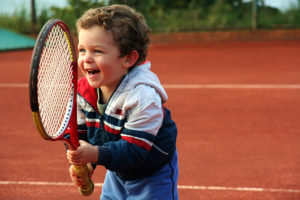 In most sports, selection decisions happen on a fairly regular basis across an athlete’s development (e.g. ice hockey programs choosing athletes to play on representative-level teams or provincial teams choosing junior athletes to participate in the Canada Games). However, high performance sport is increasingly focusing on the identification of athletes at earlier and earlier phases of development; perhaps the most extreme example we are aware of is the signing of an 18-month old child to a 10 year “symbolic” contract with a Dutch professional soccer club. This is done in an attempt to provide athletes with the optimal developmental environment to achieve future success. However, there are considerable consequences associated with this approach (e.g. overemphasis on winning at the cost of fundamental motor skill development, greater likelihood of burnout and dropout from sport). Furthermore, selecting athletes early in development assumes that the factors associated with early success (e.g. superior physical skills) are stable indicators of what performance will look like in the future, an assumption that does not have good research support (Baker & Wattie, 2018). Key performance capacities like the ability to read patterns of play (e.g., in sports like soccer and football), anticipate the forthcoming actions of opponents (e.g., in sports like tennis and squash) and make good decisions about the best options in specific situations (e.g., in decision-making sports like volleyball and baseball) only emerge after considerable time spent practicing. As a result, they are currently impossible to identify in early development because there are no good early indicators.
In most sports, selection decisions happen on a fairly regular basis across an athlete’s development (e.g. ice hockey programs choosing athletes to play on representative-level teams or provincial teams choosing junior athletes to participate in the Canada Games). However, high performance sport is increasingly focusing on the identification of athletes at earlier and earlier phases of development; perhaps the most extreme example we are aware of is the signing of an 18-month old child to a 10 year “symbolic” contract with a Dutch professional soccer club. This is done in an attempt to provide athletes with the optimal developmental environment to achieve future success. However, there are considerable consequences associated with this approach (e.g. overemphasis on winning at the cost of fundamental motor skill development, greater likelihood of burnout and dropout from sport). Furthermore, selecting athletes early in development assumes that the factors associated with early success (e.g. superior physical skills) are stable indicators of what performance will look like in the future, an assumption that does not have good research support (Baker & Wattie, 2018). Key performance capacities like the ability to read patterns of play (e.g., in sports like soccer and football), anticipate the forthcoming actions of opponents (e.g., in sports like tennis and squash) and make good decisions about the best options in specific situations (e.g., in decision-making sports like volleyball and baseball) only emerge after considerable time spent practicing. As a result, they are currently impossible to identify in early development because there are no good early indicators.
0.2 Talent identification is not done on a level playing field
The reality is that the identification and development of athletes is not a meritocracy. A number of constraints influence who gets labelled as “talented”, and whether or not athletes have opportunities to progress through a high performance developmental pathway. In some cases policies can influence selection: the relative age effect sees older youth in their age groups more likely to be selected to competitive teams likely because they’re simply physically larger, more psychologically mature, and developmentally advanced (Wattie, Schorer, & Baker, 2015). Aspects of youths’ immediate developmental environment also influence their experiences in sport. For example, there is some research suggesting obvious factors like socioeconomic resources as well as less obvious factors such as broad, geographic variables (e.g., population) limit opportunities for athlete development (Woolcock & Burke, 2013). These factors, and others, can compromise the accuracy of selection decisions, as well as influence the size of the talent pool from which to select and develop athletes.
0.3 Multivariate approaches to talent selection may be problematic
A significant advancement in sport science has been the increased use of “big data” among high performance coaches and administrators to understand the complexities of play at the highest levels of competition. On the one hand, the trickle down of these big data strategies to talent identification and athlete selection seems reasonable – if big data can improve our understanding at the elite level, surely it can have some utility at lower levels to identify athletes with the greatest potential. However, these approaches tend to be multivariate (i.e., considering the relationships between a combination of different skills and outcomes), which may not be appropriate for identifying a coach or a team’s specific need (e.g., does a team need the best well-rounded player or a player with strengths in one key area?). In many sports, the performer with the best potential for success is not the one with the greatest combination of all-round skill. Furthermore, because multivariate approaches require larger than normal datasets, they typically have to rely on data from players who may not have played in recent years. This is problematic because it assumes that the variables that predict player selection do not change over time (see #4 below for more on this). However, in many sports, particularly team sports, athlete selection is based on who is on the team at this specific point in time, how the team’s needs will change in the future, and what players are available to maintain or expand the team’s repertoire of capabilities.
0.4 Athlete selection requires predicting the future of sport
 A related point to the one made above involves the need for high performance coaches to predict how their sport will change over time. In essence, when coaches make decisions about athlete selection, they should be making predictions about what performance in their sport will look like in the X number of years left between an athlete’s current age and their age of peak performance, and whether the athlete has the skills and capabilities to reach that level of performance. Predicting what could win today in a developing athlete ignores the reality that their sport will evolve during their window of development (e.g., due to rule changes, advances in equipment and technology, etc.); the longer the window of development, the greater the potential for change. One prominent example is Usain bolt, who in younger years was considered to be too tall to be a world class 100m-sprinter because coaches believed that only smaller sprinters could reach the step frequency needed to be quick enough.
A related point to the one made above involves the need for high performance coaches to predict how their sport will change over time. In essence, when coaches make decisions about athlete selection, they should be making predictions about what performance in their sport will look like in the X number of years left between an athlete’s current age and their age of peak performance, and whether the athlete has the skills and capabilities to reach that level of performance. Predicting what could win today in a developing athlete ignores the reality that their sport will evolve during their window of development (e.g., due to rule changes, advances in equipment and technology, etc.); the longer the window of development, the greater the potential for change. One prominent example is Usain bolt, who in younger years was considered to be too tall to be a world class 100m-sprinter because coaches believed that only smaller sprinters could reach the step frequency needed to be quick enough.
0.5 Short-term priorities undermine talent selection and development
One of the challenges to developing elite athletes is the conflict that exists between short-term and long-term goals. Identifying talent begins at young ages in many of our sport systems, and the process of developing talent into expertise (i.e., performance at the highest levels of a sport) usually occurs over many years, through many different training environments. During this process coaches and selectors often prioritize short-term goals: winning this year’s games, tournaments and championships. This can result in “performance identification” – the selection of athletes that serve immediate performance goals rather than athletes that have talent and tremendous long-term potential. Furthermore, when short term priorities dominate (e.g., when linked to financial incentives), the risk that training and recovery practices fail to serve the long-term interest of individual athletes increases. We can see this in youth leagues where teams are stacked with a large proportion of top players instead of spreading them around the league. This results in the team having a high likelihood of success that year, but a sub-optimal environment for development since challenge may be low. It also compromises the learning opportunities for athletes on other teams. In circumstances where such short-term priorities undermine talent selection, organizations may need shifts in culture and incentives that align with long-term athlete development priorities.
0.6 Increased competition for talent between sports undermines athlete development
 Most athlete development models advocate a broad and diverse foundation of movement experiences during early phases of development (e.g., https://playmoresports.activeforlife.com/) while, paradoxically, the early experiences of high performance athletes have become more and more specialized. One factor driving this effect relates to the protectionist and isolationist approaches many sports have to talent identification and development. In many high performance systems, sports compete against each other for the highest quality youth samples from which to identify and develop athletes. For instance, we have heard of several examples of elite coaches who do not want their athletes to participate in other sports in the off season out of concerns that they get an injury that would affect performance in their main sport. As a result, they design a 12-month training program to keep their athlete focused in one sport. This inter- and intra-organization competition constrains opportunities for athlete development across the system. Isolationist approaches lead to an emphasis on what is best for the sport (e.g., 12-month training) instead of what might be best for the athlete (e.g., a diversified involvement where athletes play different sports during an off season). While we often see this happen in sports like ice-hockey, it may be particularly relevant in less popular sports that have a need to maintain minimum numbers to allow systems to run efficiently.
Most athlete development models advocate a broad and diverse foundation of movement experiences during early phases of development (e.g., https://playmoresports.activeforlife.com/) while, paradoxically, the early experiences of high performance athletes have become more and more specialized. One factor driving this effect relates to the protectionist and isolationist approaches many sports have to talent identification and development. In many high performance systems, sports compete against each other for the highest quality youth samples from which to identify and develop athletes. For instance, we have heard of several examples of elite coaches who do not want their athletes to participate in other sports in the off season out of concerns that they get an injury that would affect performance in their main sport. As a result, they design a 12-month training program to keep their athlete focused in one sport. This inter- and intra-organization competition constrains opportunities for athlete development across the system. Isolationist approaches lead to an emphasis on what is best for the sport (e.g., 12-month training) instead of what might be best for the athlete (e.g., a diversified involvement where athletes play different sports during an off season). While we often see this happen in sports like ice-hockey, it may be particularly relevant in less popular sports that have a need to maintain minimum numbers to allow systems to run efficiently.
Due to the limited resources available in most high performance systems around the world, identification and selection will remain parts of an athlete’s journey from grassroots to greatness. That said, frank and honest discussions with stakeholders regarding the realities of working in high performance systems are necessary. While researchers may squabble philosophically about whether talent exists, those working within the athlete development system understand the rationale for selection quite simply. To them, it reflects a decision about the most effective use of available (and often very limited) resources. Better alignment between sports would facilitate greater opportunities for athletes to experience success through practices such as “talent transfer” between sports, and potentially allow sports to maximize the pool of talented athletes and the use of limited resources.
In summary, several issues compromise effective talent identification and development in sport. Moreover, these issues are not always mutually exclusive, further complicating the already challenging practice of developing high performance athletes. The challenge for researchers and practitioners alike is to test and implement creative strategies to mitigate the factors that negatively impact the efficacy of athlete development initiatives.
Have you ever stopped to wonder the difference a day can make? Say, being born December 31st or January 1st? This small 24-hour window could be the difference between competing in elite vs. recreational sport, or being identified as “gifted”, or (mis)diagnosed with a learning disability in school. Many youth development systems (e.g., sport and education) rely on arbitrary cut-off dates to group individuals into cohorts, which result in age differences among children within a single cohort. Consider that an 11-month age difference among 10-year-old children represents 10% of their total life experience. While this difference may seem trivial, it can lead to a phenomenon known as the relative age effect (RAE). The RAE tends to advantage the oldest individuals in a cohort and disadvantage their relatively younger peers. The implications of RAEs are broad, extending from sport to education to health and wellbeing. For example, the relatively youngest students have been found to achieve lower grades and have poorer school attendance rates (Cobley et al., 2009a), are less likely to attend or complete post-secondary school (Bedard & Dhuey, 2006; Dhuey et al., 2017), demonstrate lower levels of self-esteem (Thompson et al., 2004), and have higher rates of suicide (Thompson et al., 1999) and incarceration for juvenile crimes (Dhuey et al., 2017).
Why does this happen? The answers, it turns out, are fairly straight-forward. Relative age effects tend to occur when individuals are selected based upon their perceived ability and then placed into differing steams (e.g., gifted programs, competitive sport) that offer dissimilar opportunities and resources. The problem is that coaches, teachers, and parents often confuse “talent” with “age.” While they assume they are selecting the most talented children for these elite opportunities, often it is just the oldest among the cohort.
Within sport, we tend to see RAEs most frequently in culturally valued activities such as hockey in Canada, or soccer in England. Unfortunately, RAEs can lead to younger athletes dropping out (e.g., Lemez et al., 2014) thereby missing out on the many positive outcomes associated with sport participation.
Ice hockey has been one of the most frequently studied sports with RAEs occurring as early as age 7 (Hancock et al., 2013), peaking at elite junior levels (≈ 16-21 years), then leveling off somewhat in the NHL (Cobley et al., 2009b). However, there is evidence suggesting that younger athletes who “survive” the system may ultimately become better as a result (Gibbs et al., 2011).
Within sport, RAE is a popular topic among academics and policy makers, having been discussed at previous Sport Canada Research Initiative conferences and featured in the SIRCuit. The RAE has also captured the attention of the popular press, having been profiled in such best-selling books such as Gladwell’s (2008) Outliers: The Story of Success and Levitt and Dubner’s (2009) SuperFreakonomics, sports magazines like Sports Illustrated (Levy, 2011), and on television programs such as 60 Minutes (CBS Interactive, 2012).
The RAE problem that plagues education and sport can lead to inequitable experiences and opportunities for individuals. Researchers must work in collaboration with sport and education stakeholders to develop feasible and attractive solutions to the RAE so that all individuals, regardless of their birthdates, have equal opportunities to experience success in academics and athletics.
To the average fan watching international competitions, the finished product delivered to your television or computer screen does not always reveal the enormity of action that happens behind the scenes. Stepping off the ice at the Gangneung Hockey Centre, the venue for the men’s hockey tournament at the 2018 Pyeongchang Olympic Winter Games, and walking down the tunnel into the depths of the arena and into one of the dressing rooms, would give many people an eye-opening impression of the work that happens in preparation for those teams hitting the ice for competition.
That on-site preparation and support is impressive; however, a considerable amount of time and effort is also invested in advance to build the best possible team. This article provides an insider account from a staff perspective of the year leading up to and during the 2018 Olympic Winter Games.
Building the Team
The 2018 Olympic Winter Games presented some challenges for player evaluation and team building – 2018 was the first Games since 1994 that did not include NHL players, and a full-time national men’s team does not exist like it once did. Leading up to the naming of the Olympic roster in January 2018, staff diligently conducted thorough scouting evaluations, and potential candidates were gathered from across the globe to be evaluated during four tournaments between August and the New Year. This was also a valuable opportunity to evaluate potential opponents. Including the Olympic tournament, that’s five tournaments in six countries in seven months! When you factor in the many moving parts supporting a national or Olympic hockey team, this undertaking required some serious support.
A team of management and coaching staff was in place for the challenging process of creating an Olympic hockey team within the span of one year. Many long days and long hours were spent travelling the globe in an effort to evaluate Canada’s talent playing in various leagues world-wide. Regular video reviews, group meetings and video conference calls were conducted to narrow this selection down to a final working team. This process was certainly far more than just getting the best players on paper and putting them on the team; team selection was a complex process. Positional players, offensive/defensive minded players, special team abilities, skills, attitudes, leadership abilities, and experience were only some of the considerations necessary to create an effective and cohesive group.
All Hands on Deck
In the dressing room at each tournament, you will find two trusty Equipment Managers and the Dressing Room Manager, who also happens to be an excellent Massage Therapist. This group was invaluable to players and staff alike. Aside from the hefty schedule overall, they also had to handle challenges such as back-to-back tournament moves in August 2017 from Sochi to St. Petersburgh, Russia and in November 2017 from Biel, Switzerland to Helsinki, Finland within one tournament. Yet, their attention to detail for dressing room set-ups as well as their care and attention to specific player needs was second to none. Players and staff walking into the Team Canada dressing room would have immediately noticed how immaculate and well organized it was. Dressing room stalls were organized neatly and identically; and the flow of the rooms were well-considered, from the dressing room to the medical room to the coach’s room. At each site, the Team Canada floor carpet was placed in the center of the room, with small versions at each player’s stall, tapping into national pride. Placards in each player’s stall indicating former Team Canada Olympic players who previously wore that specific number provided a nice link to Team Canada history. Similarly, wall signage chronicling previous Canadian Olympic teams and their team jerseys was another inspirational history link. Adding to the patriotic pride was a map of Canada indicating each players’ hometown, as well as many other motivational and team slogans neatly placed throughout the room.
The Integrated Support Team
Attention to the physical and mental health and performance of players is at the forefront of athlete support now more than ever before. The Integrated Support Team (IST) was very important given the logistics of the team’s evaluation process. All the players were active on club teams, under heavy travel and time zone strains, and no doubt feeling the pressure of competing for a spot on the Olympic hockey team – this made a quality IST critically important. Addressing fatigue and preventing and/or treating injury were top priorities. The following group was assembled to ensure comprehensive physical and emotional care:
- Team Physician
- Massage Therapist (aka the Dressing Room Manager)
- Two Athletic Therapists
- Exercise Physiologist
- Strength and Conditioning Coach
- Motivational speaker
- Sleep consultants
 The team physician was very involved in all realms of the IST, assisting, advising and implementing care along the way. Our exercise physiologist educated players and coaches on scheduling, factoring in jet-lag, sleep patterns, and fatigue and wellness. Daily wellness questionnaires and practice Rate of Perceived Exertion (RPE) scores were important in monitoring athlete loading and wellness. His implementation of light therapy combined with a jet-lag plan developed by our sleep specialists was used to help players adjust across time zones, and was very important in the players’ physical and mental preparation. Our strength and conditioning coach gathered valuable information in the lead-up to the games using the Catapult GPS monitoring system during practices and exhibition games to track players’ output and workloads. The system produced many metrics for each player, such as skating volume, intensities, and overall workload, which provided valuable feedback to the coaching staff for practice planning, goals and expectations. Our Athletic Therapists dealt with any pre-existing or new injuries, and focused on “performance treatment” for the athletes, keeping them tuned up and ready to go. Physical recovery was assisted through regular massage, post-exertional flushes and stretching, cold-baths, compression recovery boots, and cyclical recovery, such as biking, rowing, or elliptical cool-downs. Full treatment rooms were set-up at the arena and the accommodation sites, allowing convenient treatment options for all players.
The team physician was very involved in all realms of the IST, assisting, advising and implementing care along the way. Our exercise physiologist educated players and coaches on scheduling, factoring in jet-lag, sleep patterns, and fatigue and wellness. Daily wellness questionnaires and practice Rate of Perceived Exertion (RPE) scores were important in monitoring athlete loading and wellness. His implementation of light therapy combined with a jet-lag plan developed by our sleep specialists was used to help players adjust across time zones, and was very important in the players’ physical and mental preparation. Our strength and conditioning coach gathered valuable information in the lead-up to the games using the Catapult GPS monitoring system during practices and exhibition games to track players’ output and workloads. The system produced many metrics for each player, such as skating volume, intensities, and overall workload, which provided valuable feedback to the coaching staff for practice planning, goals and expectations. Our Athletic Therapists dealt with any pre-existing or new injuries, and focused on “performance treatment” for the athletes, keeping them tuned up and ready to go. Physical recovery was assisted through regular massage, post-exertional flushes and stretching, cold-baths, compression recovery boots, and cyclical recovery, such as biking, rowing, or elliptical cool-downs. Full treatment rooms were set-up at the arena and the accommodation sites, allowing convenient treatment options for all players.
Supporting Players’ Mental Health
Stress and anxiety is an inevitable part of trying out for and competing on an Olympic team. In addition to the support provided by other members of the IST, we were fortunate to have an excellent motivational speaker who would relate his own worldly accomplishments to the feat that this team was attempting to accomplish. His group meetings and presentations were inspirational to say the least, and he was also valuable in connecting with players one-on-one. His messages of leadership, perseverance, belonging, and togetherness were well absorbed by our group. They were truly engaged in his message and he definitely helped them pull together as cohesive unit.
Togetherness
Much like regularly bringing players together to practice and compete was an important part of building the team, having the full staff together for the tournaments and evaluations was also very important. Learning our roles and responsibilities, and getting to know each other’s strengths and personalities, was very important to create a strong team environment. From the start of this process, we were all there – every tournament, every trip, and every team-builder session. Our attitudes, outlook, and cohesiveness and were as important as those attributes were for the players. The more unified and functional the staff was as a unit, the better it was for the players and ultimately the team. Our togetherness was the foundation of the team’s togetherness.
An important outcome of the staff’s involvement in the entire process was the building of relationships and familiarity with the players. This enhanced our ability to provide thorough care for them at the most important times. Knowing their previous issues, what they prefer for manual therapy or treatment modalities, or their preferred frequency and timing of care were a few examples of how this was beneficial. These relationships ensured players would feel comfortable with the staff, knowing we were open, approachable and there for their physical and mental health.
As each of these evaluation tournaments took place, the focus and intensity of the process continued to ramp up. That could be said for both the players on the ice, and the staff off of the ice. Our growing comfort and understanding of working together improved with every gathering. As we reached the December tournaments, players and staff were peaking. Everyone’s excitement was growing as the Games in February drew closer.
Finally Stepping onto the Olympic Stage
With our final roster in place, the team gathered in late January in Riga, Latvia for ten days for the Olympic training camp and two exhibition games. Sharing the excitement with the Olympic team members was special. Some of these players were at several of the evaluation tournaments and as mentioned, relationships were formed early amongst players, and between players and staff. The excitement continued to build through training camp and the team finally traveled to Korea for the Olympic Games.
 Olympic venues, Olympic village, Olympic athletes. Players and staff rode the roller coaster of emotion from the selection process right to Korea. The moose statue outside Team Canada’s Olympic Village building clearly marked our “home” for the next weeks. Players arrived at their apartments to find a plaster of their minor hockey pictures and names on the door. Inside, Canadiana everywhere – Maple Leafs, log cabin-like wall paper, bedroom-door name-signage, Canada accent pillows, and even plaid shower curtains and bed covers. After the long trip from Riga to Gangneung, Korea, players dropped into their beds, only to find a family picture thoughtfully placed on their night stand. The importance of country, family, and team were prevalent throughout the Canadian areas. Understanding that this event was bigger than any one of us and even bigger than any one team was important to keep our goals and purpose in perspective; knowing that incredible support was always available within the team but also available from family, friends, and fans.
Olympic venues, Olympic village, Olympic athletes. Players and staff rode the roller coaster of emotion from the selection process right to Korea. The moose statue outside Team Canada’s Olympic Village building clearly marked our “home” for the next weeks. Players arrived at their apartments to find a plaster of their minor hockey pictures and names on the door. Inside, Canadiana everywhere – Maple Leafs, log cabin-like wall paper, bedroom-door name-signage, Canada accent pillows, and even plaid shower curtains and bed covers. After the long trip from Riga to Gangneung, Korea, players dropped into their beds, only to find a family picture thoughtfully placed on their night stand. The importance of country, family, and team were prevalent throughout the Canadian areas. Understanding that this event was bigger than any one of us and even bigger than any one team was important to keep our goals and purpose in perspective; knowing that incredible support was always available within the team but also available from family, friends, and fans.
Every little detail. Togetherness. There is no I in IST.
You’ve probably heard of the Relative Age Effect – the concept that when children are placed into groups such as school classes or sports based on their chronological age, those born early in the cohort may have physical or intellectual advantages compared to those born late, leading to selection for enriched opportunities that tend to compound the advantage. Research into sport shows relative age effect can be a systemic advantage to the early-born and disadvantage to the later-born, excluding late-developers and robbing programs of talent and potential.
An alternative to traditional age-based divisions is bio-banding; the process of grouping athletes on the basis of growth and maturation, rather than chronological age (Cumming et. al, 2017, p. 34). Bio-banding is showing positive impact by reducing injury rates and improving an individual’s ability to improve both technical and tactical skills by adjusting for their training and competitive experiences. It is one of several approaches to providing developmentally-appropriate training and competition that aim to avoid the pitfalls of simple grouping based on chronological age.
Who is using bio-banding?
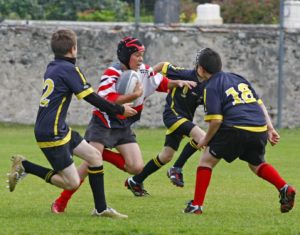 In the UK, Dr. Sean Cumming of the University of Bath is working extensively with several English Premier League (EPL) youth academy programs to implement bio-banding. The EPL has a well-developed and well-supported Player Management System that collects data on youth academy players for analysis, allowing for accurate monitoring of player information over time, not just snapshot moments of physical growth or performance. In 2016 the EPL organized the first bio-banded youth tournament. Feedback from the players has been positive. Other sports that Cumming has been working with include rugby (New Zealand as well), tennis, gymnastics and ballet. See this Vimeo for more info.
In the UK, Dr. Sean Cumming of the University of Bath is working extensively with several English Premier League (EPL) youth academy programs to implement bio-banding. The EPL has a well-developed and well-supported Player Management System that collects data on youth academy players for analysis, allowing for accurate monitoring of player information over time, not just snapshot moments of physical growth or performance. In 2016 the EPL organized the first bio-banded youth tournament. Feedback from the players has been positive. Other sports that Cumming has been working with include rugby (New Zealand as well), tennis, gymnastics and ballet. See this Vimeo for more info.
How to make it work
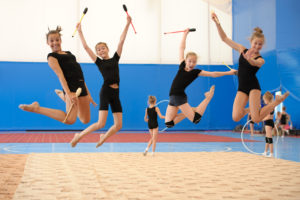 According to Cumming et al (2017), “The accurate measurement of chronological age, height, and weight of the youth players and of biological mid-parent height is central to the protocol for estimating predicted adult stature. As such, it is important that those responsible for taking such assessments are appropriately trained and qualified.” (page 36). An introduction to assessing growth can be found in the Sport for Life resource “The Role of Monitoring Growth in LTAD”. However, to understand how measurement for bio-banding is done in detail, refer to the Cumming et al. (2017) or Khamis and Roche (1994) articles referenced below.
According to Cumming et al (2017), “The accurate measurement of chronological age, height, and weight of the youth players and of biological mid-parent height is central to the protocol for estimating predicted adult stature. As such, it is important that those responsible for taking such assessments are appropriately trained and qualified.” (page 36). An introduction to assessing growth can be found in the Sport for Life resource “The Role of Monitoring Growth in LTAD”. However, to understand how measurement for bio-banding is done in detail, refer to the Cumming et al. (2017) or Khamis and Roche (1994) articles referenced below.
In practice, organizations and coaches using bio-banding should be prepared to monitor the physical growth and development of athletes regularly until the end of the adolescent growth spurt, and adjust the individual athlete’s training and competition accordingly throughout. This means athlete “transition” to different levels of competition would be determined by the pace of development, not by registration year or date of birth. In training, bio-banding might also be used to group young athletes into different physical training sessions, and to track progression in technical skills and athleticism over time based on the bio-banded category.
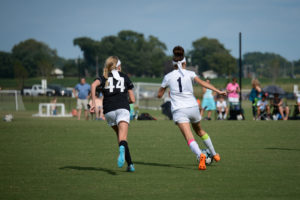 The grouping of young athletes through bio-banding is not a bullet-proof method for assuring appropriate athlete development – it is a strategy to be considered in addition to usual chronological-based groupings. Regardless of matched percent of adult height (the primary bio-banding measurement used), the coach (or support staff such as sport psychologist) must always assess the young athlete’s overall technical/tactical and psychological readiness to be placed into these non-chronological assignments. Although work to date has been done largely in boys, we suggest that awareness of social cohesion for girls would be another important consideration if using bio-banding for girls
The grouping of young athletes through bio-banding is not a bullet-proof method for assuring appropriate athlete development – it is a strategy to be considered in addition to usual chronological-based groupings. Regardless of matched percent of adult height (the primary bio-banding measurement used), the coach (or support staff such as sport psychologist) must always assess the young athlete’s overall technical/tactical and psychological readiness to be placed into these non-chronological assignments. Although work to date has been done largely in boys, we suggest that awareness of social cohesion for girls would be another important consideration if using bio-banding for girls
“Although bio-banding places athletes into groups on the basis of physical characteristics, it does not preclude the consideration of psychological and/or technical skills. An early maturing boy, for example, might be discouraged from competing against or training with older youth if they lacked the technical competence and/or psychological maturity to ensure a safe and positive experience (50,51). Similarly, a late maturing boy who is already thriving within his age group is unlikely to benefit from competing against peers who are younger but of similar maturity. Bio-banding does not preclude the consideration of technical and psychological development. These attributes should be taken into consideration when grouping athletes by size and/or maturation for the purpose of training and competition.” (Cumming et al., 2017, p. 35)
How do we move forward with the use of bio-banding?
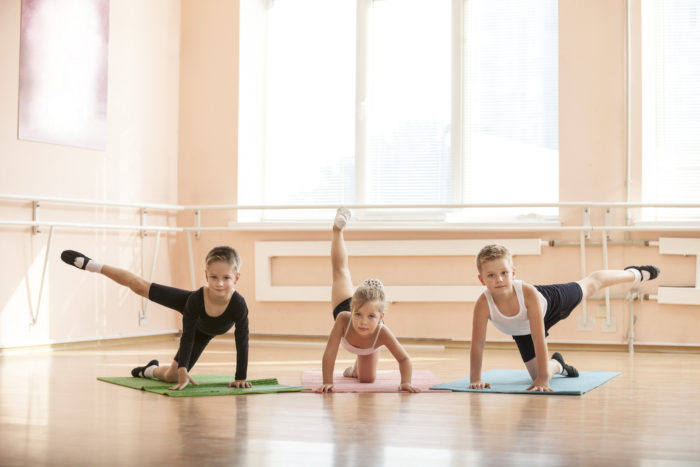 Changes like bio-banding are more likely to be implemented when coaches experience a problem they wish to solve or want to tackle a long-standing issue, than when researchers provide “top down” recommendations. Cumming points out that knowledge about the early and late maturing athlete dilemma has been around for many years (see Robert Malina’s work from the 1970’s on). It was only when the EPL academies were losing athletes due to injury or lack of improvement, that they started questioning their habits of recruiting young players (i.e. talent ID at the ages of 8-10 years of age), and realized they needed to start doing things differently.
Changes like bio-banding are more likely to be implemented when coaches experience a problem they wish to solve or want to tackle a long-standing issue, than when researchers provide “top down” recommendations. Cumming points out that knowledge about the early and late maturing athlete dilemma has been around for many years (see Robert Malina’s work from the 1970’s on). It was only when the EPL academies were losing athletes due to injury or lack of improvement, that they started questioning their habits of recruiting young players (i.e. talent ID at the ages of 8-10 years of age), and realized they needed to start doing things differently.
Both Cumming and Dr. Adam Baxter-Jones at U of Saskatchewan comment on the importance of keeping parents informed about the purpose of bio-banding. Although most parents feel good when their child is asked to “play up” there is negative stigma attached for the child being asked to “play down”. EPL academies have addressed this by naming bio-banding programs after who have succeeded by “playing down”. One example is Harry Kane from the Tottenham Hotspurs, an England International, who has said “It’s hard to tell at that age what a player is going to turn into. I was small for my age. I was a late developer…it’s hard to call a player at such a young age. As I got older and older, I grew up a bit, caught up to the rest of my players my age, and it went from there.”
We also need to ensure our coach education programs provide accurate information on athlete growth and development, how to monitor it, and how to manage early, “normal” and late-developing athletes in our programs.
Resources
Podcasts about bio-banding featuring Sean Cumming:
Pacey Performance (episode #147)
Athlete Development Show (episode #10)
Relative age effects (RAEs) are developmental advantages experienced by those born in the early months of the year relative to an age-defined cut-off date (Barnsley et al., 1985). In sport and educational settings, RAEs tend to endure, resulting in an accumulated advantage that could affect youths’ overall development (Murray, 2003). This research program investigated the accumulated advantage of RAEs amongst Canadian male adolescent ice hockey players at different competitive levels (i.e., house league and travel) in hopes of: a) assessing the leadership behaviours and other developmental outcomes (e.g., personal & social skills, goal setting) among Canadian hockey players within the context of RAEs, and; b) comparing the attributes of relatively younger and older hockey players.
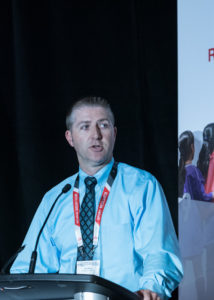
Despite significantly more travel players being born in the early months of the selection year than the latter months, no significant differences in leadership behaviours or other developmental outcomes were found among travel or house league players based on birth quartile. Moreover, there were no significant interactions between birth quartile and competitive level on these outcomes. These results should be comforting to sport administrators, particularly in light of published reports of how RAEs are impacting developmental outcomes among youth in alternative settings, such as education (e.g., Cobley et al., 2009; Dhuey & Lipscomb, 2008). To the extent that participation in hockey is providing adolescent males with equal opportunities to develop skills that are valued in the workplace (Kuhn & Weinberger, 2005), this achievement is worthy of celebration.
Research methods
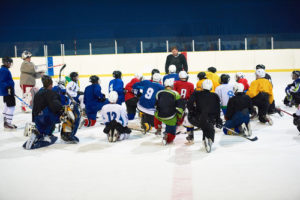 Adolescent male travel and house league ice hockey players were recruited at tournaments across Ontario to complete an online survey that evoked general demographic information, including date of birth, along with their responses to the Leadership Scale for Sport (LSS; Chelladurai & Saleh, 1980) and the Youth Experience Survey for Sport (YES-S; MacDonald et al., 2012). The LSS measures five dimensions of leadership, while the YES-S examines five dimensions of youth development: personal and social skills, initiative, goal setting, cognitive skills, and negative experiences. Both scales demonstrated adequate model fit and reliability in previous research involving adolescent athletes.
Adolescent male travel and house league ice hockey players were recruited at tournaments across Ontario to complete an online survey that evoked general demographic information, including date of birth, along with their responses to the Leadership Scale for Sport (LSS; Chelladurai & Saleh, 1980) and the Youth Experience Survey for Sport (YES-S; MacDonald et al., 2012). The LSS measures five dimensions of leadership, while the YES-S examines five dimensions of youth development: personal and social skills, initiative, goal setting, cognitive skills, and negative experiences. Both scales demonstrated adequate model fit and reliability in previous research involving adolescent athletes.
To determine if an RAE was present within these samples, we grouped athletes into birth quartiles using the December 31st cut-off date prescribed by Hockey Canada. Athletes born in January, February, and March were placed in quartile one (Q1), while quartile two (Q2) consisted of those born in April, May and June, and so forth. Chi-square goodness of fit tests were performed to determine if the birthdate distributions of the male travel and house league hockey players differed significantly from what we would expect among midget-aged players (15-17 years) within the Ontario Hockey Federation (Hancock et al., 2013) and the general Canadian population. Effect sizes were calculated using Cramér’s phi and, when necessary, standardized residuals for the significant chi-square values were calculated post-hoc to identify which quartiles differed significantly from the expected birth distributions.
Finally, we performed multivariate analysis of variance (MANOVA) tests to determine if scores on the sub-scales of the LSS and YES-S differed because of birth quartile. Through these analyses, we attempted to discern how relative age may influence the leadership behaviours and development of male adolescent hockey players. When necessary, and to account for correlations among dependent variables in the LSS and YES-S, we employed relative weight analyses to discern where significant differences were located.
Research results
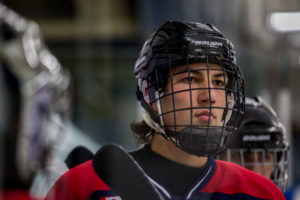 Consistent with previous research (e.g., Hancock et al., 2013; Montelpare et al., 2000), we found no evidence of a RAE among the male adolescent house league hockey players that we surveyed (n = 453). Although our MANOVA results revealed significant multivariate differences between quartiles of birth on the LSS dimensions, post-hoc tests indicated that the relative weights were not statistically significant. Therefore, quartile of birth was not significantly different for any of the LSS dimensions. Similarly, we found no significant multivariate differences between quartiles of birth on the five YES-S dimensions.
Consistent with previous research (e.g., Hancock et al., 2013; Montelpare et al., 2000), we found no evidence of a RAE among the male adolescent house league hockey players that we surveyed (n = 453). Although our MANOVA results revealed significant multivariate differences between quartiles of birth on the LSS dimensions, post-hoc tests indicated that the relative weights were not statistically significant. Therefore, quartile of birth was not significantly different for any of the LSS dimensions. Similarly, we found no significant multivariate differences between quartiles of birth on the five YES-S dimensions.
On the contrary, we found a significant difference between the birth distribution of travel players (n = 259) and what we would expect to find in the general population, with significantly more players born in Q1 and significantly fewer players born in Q4. These results are also consistent with previous research (e.g., Barnsley & Thompson, 1988; Hancock et al., 2013). Despite evidence of a RAE among travel players, no significant multivariate differences were found between quartiles of birth on dimensions of the LSS or YES-S. Finally, there were no interactions between birth quartile and competitive level on the dimensions of the LSS or YES-S.
Caution should be exercised when generalizing these results, or lack thereof. Firstly, the vast majority of our sample was born and participated in hockey in Ontario, making it difficult to generalize our results to other geographic regions or sports. Secondly, as with any self-reported survey, it is difficult to ensure participants answered questions about their experiences in sport thoughtfully and honestly. Finally, our results may be somewhat skewed because athletes who had negative experiences in hockey may have already dropped out of the sport. This is noteworthy given that other researchers have found relatively younger athletes dropping out of sport due to their negative experiences prior to or during adolescence (e.g., Helsen et al., 1998; Lemez et al., 2014).
Policy implications
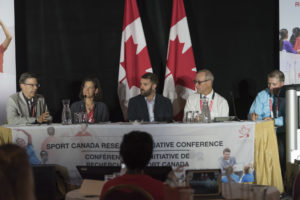 To our knowledge, this is the first series of studies to examine the relationship between relative age and leadership behaviour and other developmental outcomes within sport. While Dhuey and Lipscomb (2008) found relatively younger adolescent students acquire fewer leadership experiences prior to graduation, our results demonstrate that leadership behaviours and other developmental outcomes among adolescent male travel and house league ice hockey players are not influenced by relative age or competitive level. These contrasting results may stem from coaches and other sport administrators developing these qualities in all of their athletes, regardless of their relative ages. Determining that travel and house league hockey players are not being (dis)advantaged in terms of their leadership behaviours or other developmental outcomes because of their relative ages can help guide future research and inform professional practice. To the extent that participation in hockey is providing equal opportunities to develop skills that are valued in the workplace (Kuhn & Weinberger, 2005), our null results are worthy of celebration. In the future, Ontario parents, teachers, and other relevant stakeholders should consider promoting hockey to children as a method to facilitate positive youth development and leadership behaviour, given that relative age plays no discriminating role in achieving these outcomes.
To our knowledge, this is the first series of studies to examine the relationship between relative age and leadership behaviour and other developmental outcomes within sport. While Dhuey and Lipscomb (2008) found relatively younger adolescent students acquire fewer leadership experiences prior to graduation, our results demonstrate that leadership behaviours and other developmental outcomes among adolescent male travel and house league ice hockey players are not influenced by relative age or competitive level. These contrasting results may stem from coaches and other sport administrators developing these qualities in all of their athletes, regardless of their relative ages. Determining that travel and house league hockey players are not being (dis)advantaged in terms of their leadership behaviours or other developmental outcomes because of their relative ages can help guide future research and inform professional practice. To the extent that participation in hockey is providing equal opportunities to develop skills that are valued in the workplace (Kuhn & Weinberger, 2005), our null results are worthy of celebration. In the future, Ontario parents, teachers, and other relevant stakeholders should consider promoting hockey to children as a method to facilitate positive youth development and leadership behaviour, given that relative age plays no discriminating role in achieving these outcomes.
Next steps
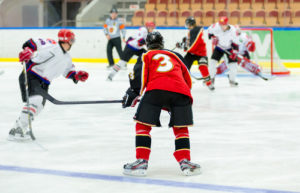 Despite the null findings in this study, we believe relative age ought to be considered in other studies exploring positive youth development within sport to provide a more comprehensive analysis of other potential influences on youth sporting experiences. In particular, we recommend the replication of this study with samples drawn from other sports, other competitive levels, as well as from female athletes, where RAE patterns are more equivocal (e.g., Wattie et al., 2007; Weir et al., 2010).
Despite the null findings in this study, we believe relative age ought to be considered in other studies exploring positive youth development within sport to provide a more comprehensive analysis of other potential influences on youth sporting experiences. In particular, we recommend the replication of this study with samples drawn from other sports, other competitive levels, as well as from female athletes, where RAE patterns are more equivocal (e.g., Wattie et al., 2007; Weir et al., 2010).
Key stakeholders and benefits
A list of sport organizations, governments (units, branches or sectors) and/or groups that may benefit from the findings and describe those benefits here.
- Sport Canada (better informed sport policies)
- Ontario Ministries of Education and Advanced Education and Skills Development (enhanced integration of educational policies with sport)
- National, provincial and community sport organizations (clearer visions and better targeted efforts in enhancing equitable sport participation and youth development)
- Academic community (use of findings to inform research and teaching)
- Coaches and sport administrators (improve equitable sport participation and youth development)
2017 Sport Canada Research Initiative Conference (Knowledge Transfer Summary)
Investigators: Jess C. Dixon, University of Windsor; Sean M. Horton, University of Windsor; Patricia L. Weir, University of Windsor; Joe Baker, York University; Stephen P. Cobley, The University of Sydney
SCRI Conference presentation video.

